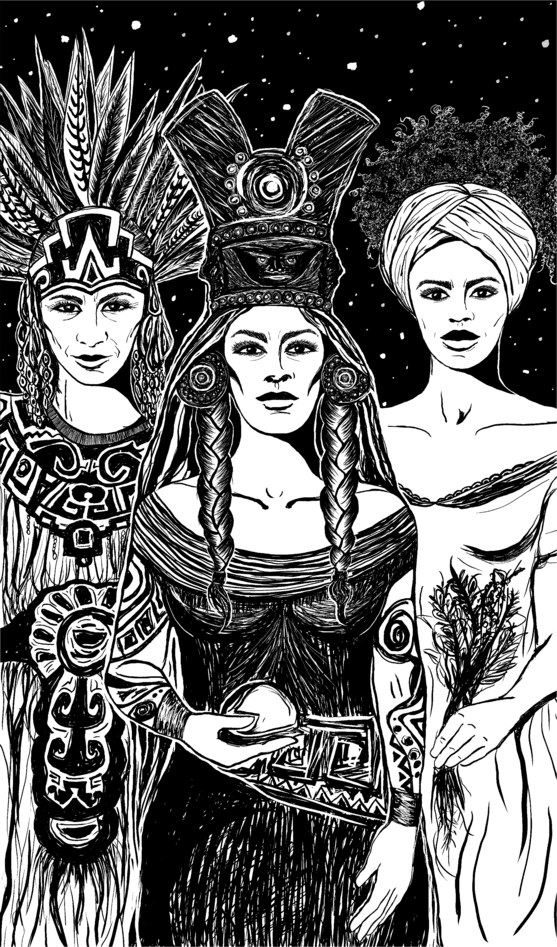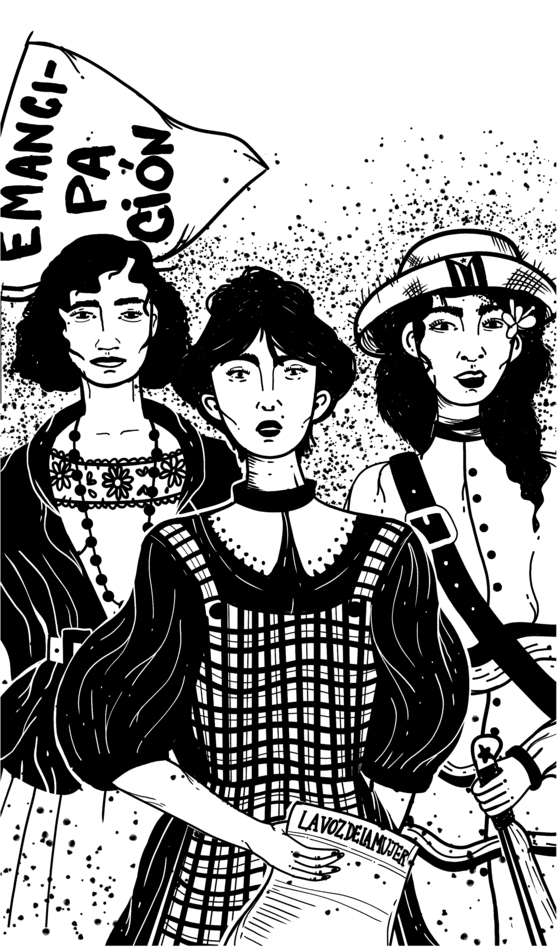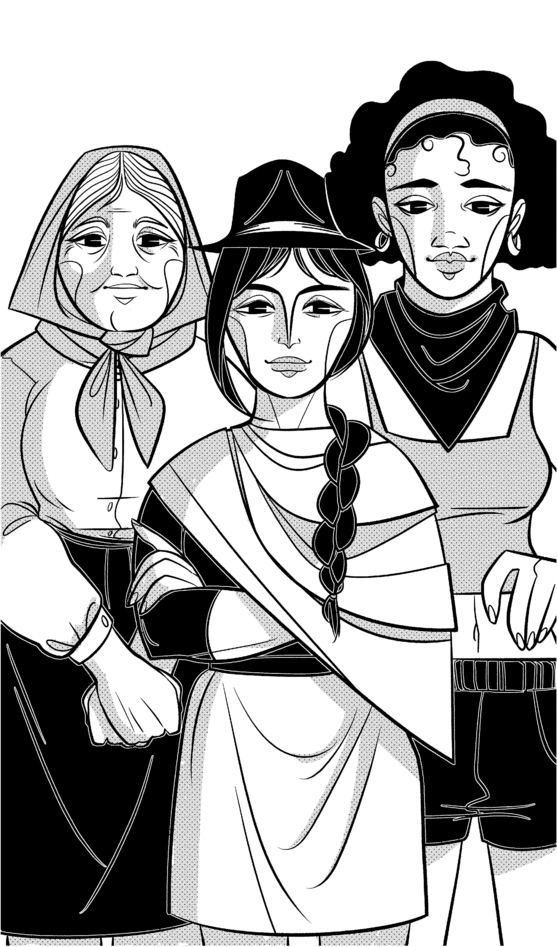
.
BLACK WITCHES OF CARTAGENA COL
TAHUANTINSUYO PRIESTESSES PER
MESOAMERICAN HEALERS MEX / GUA
In various territories of Abya Yala, indigenous peoples and African slaves took up arms against the colonial yoke. But there was another resistance process underway, subtle and cultural, carried out mainly by women. While the Catholic Church imposed itself with the sword and cross, Aztec and Mayan healers, priestesses from Tahuantinsuyo, and black witches from Cartagena, kept alive the traditions and customs of ancestral societies that had to be defended. Persecuted, demonized or burned at the stake, these women preserved a wisdom that has been rescued in new, sovereign and free models of society.

.
YUCATÁN RURAL TEACHERS MEX
ARGENTINIAN ANARCHISTS ARG
MAMBISAS CUB
At the end of the 19th century, Latin America was a continent of contrasts between young republics and old colonies. But a common element, in the different contexts, was the growth of women’s struggles. An important example were the so-called mambisas in Cuba; claiming their African roots, they were part of the guerrilla movement that would play a decisive role in the island’s independence. In other countries, where the dust of the wars of independence had already settled, women’s movements began to open their own battlefronts, combining heritage from European traditions with autochthonous elements. In Argentina, women activists such as Virginia Bolten were leading figures in the anarchist sectors, then predominant in the fledgling trade union movement. In Mexico, rural women teachers in Yucatán took some of the first steps in a sector that historically would become very combative.

.
WOMEN UNIONS VEN
FEDERATION TOWARDS WOMEN’S PROGRESS BRA
CERRO CHATO URU
While the trade union and peasant movements were moving forward, in the 1920s organizations began to emerge in Latin America to demand women’s rights. One of the first banners of struggle was universal voting rights. Although this was not a radical change, the combative positions of the first feminist movements challenged the religious and conservative roots of Creole societies. The first historical breakthrough took place in Uruguay in 1927, in Cerro Chato, when a plebiscite was held to reorganize the town’s jurisdiction. Although it was a strictly local vote, it was the first electoral contest in the region in which women voted. In neighboring Brazil, the Brazilian Federation for Women’s Progress made suffrage one of its main demands, winning the right in 1932. In other countries the struggle took longer, with universal suffrage being adopted in the 1940s, 1950s and, in the case of Paraguay, only in 1961.

.
MOTHERS OF PLAZA DE MAYO ARG
COMMUNITY FEMINISM BOL
GREEN TIDE ARG/MEX
Since the second half of the 20th century, women’s organizations and feminist movements have been growing stronger, fighting for their rights in contexts of both democracy and dictatorship. The Mothers of Plaza de Mayo (Argentina) have decades of experience, a tireless journey in defense of human rights that not even the dictatorship was able to break. In Bolivia, community feminism was a pioneer in pointing out patriarchy as a key element of capitalist oppression. And in recent years, feminist movements have raised their own banners, creating a remarkable “green tide” across the continent to demand the legalization of abortion.









